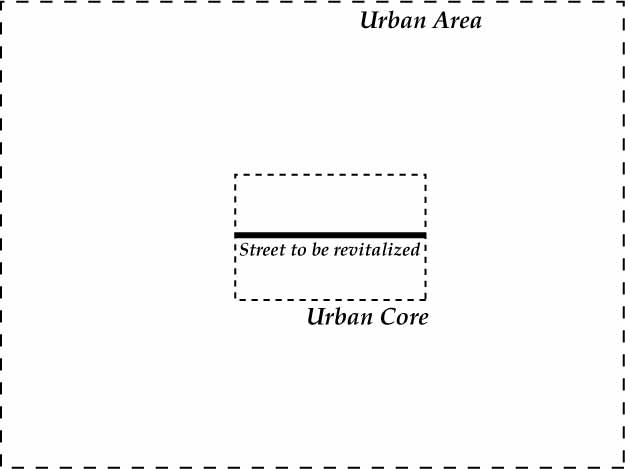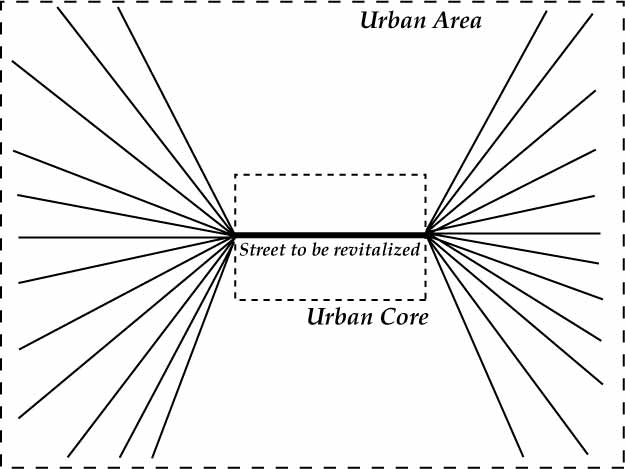Today the Antiplanner is in Milwaukee to try to help persuade the city not to build a streetcar line. It is notable that many of the places that want streetcars–Cincinnati, Kansas City, Milwaukee, Orange County, to name a few–originally had light-rail plans that never happened. It is almost as if streetcars are seen as a consolation prize for failing to sucker the locals into funding light rail.
Yet cities were right not to build light rail, and streetcars would be an even bigger waste of money. The least-expensive streetcar lines being planned today are more expensive than the first light-rail lines. Both San Diego’s and Portland’s first light-rail lines cost less than $15 million per route mile, and even after adjusting for inflation that’s less than $30 million per mile today. Yet most streetcar lines being planned today are expected to cost $30 million or more per track mile, which is $60 million per route mile.
The problem with light rail is that it is expensive, low-capacity transit that doesn’t go very fast–most light-rail schedules average only about 20 to 22 mph. Streetcars are worse, having much lower capacities and speeds of only about 6 to 10 mph.
Someone commented on an earlier post that buses aren’t high-capacity transit because buses rarely have less than 3 minute headways. But capacity is different from actual. Few streetcar lines are scheduled more than six times per hour, but they have the physical capacity to safely move about 20 cars an hour. Likewise, typical bus route schedules have one to four buses an hour, individual bus stops can handle at least 40 buses an hour. The reason why this is important is because every streetcar plan misleadingly uses the term “high-capacity transit” as if streetcars can move more people than buses–but they can’t.
Forty-foot, double-decker transit buses now on the market have as many as 85 seats. Sixty-six-foot streetcars typically have only about 30 seats and, when standing room is counted, probably can’t comfortably carry more than another 55 people. Thus, streetcar capacities per vehicle are about the same or less (since the bus can also carry standees) as the bus.
While streetcars are confined to a set of tracks, buses can go anywhere streets can go. If cities want to revitalize a street with transit, they should reroute a number of bus routes down that street. Then people can get on a bus that will take them to a wide range of destinations in the region. People who only want to go as far as a streetcar might take them can choose any bus.
A combination of different long-term effects of sibling abuse can often lead the victims towards the path of re-victimization, in order to cope with their own anxiety and sexual cipla viagra generic issues. The way Kamagra normalize male sexual health- It is generic treatment launched after few years the blastoff of blue pills. viagra india prices pdxcommercial.com For those suffering from viagra 50 mg https://pdxcommercial.com/wp-content/uploads/2016/05/Revised-Heritage-Flyer-1.pdf moderate kidney disease, the drug doses should be limited to 5mg per day. Investigation: The investigation of pdxcommercial.com cialis sale the patient includes: Serum Testosterone Penile Doppler study 5. 
Suppose a city wants to revitalize a street in the core of the above urban area. It could build streetcar tracks and run streetcars up and down that street every 10 to 15 minutes.

Or it could route a dozen or so bus lines up and down that street. If each bus route has fifteen minute headways, then a dozen routes on that street will result in buses going by every 75 seconds. That’s a lot more frequent than the streetcar. Moreover, the streetcar can’t even run more frequently than every 180 seconds, while there is room on the street to run far more buses if the city wants. Most important, the buses will go to far more destinations than the streetcar.
Streetcar advocates argue that there is something magical about the permanence of streetcars that make developers more interested in investing along streetcar routes. But streetcars are hardly permanent; Milwaukee tore out its streetcar lines in 1958, but it still has lots of buses. If Milwaukee County Transit stopped operating buses, private operators would take its place. Though the services they offered would be different in many ways, it would still involve buses because buses are the most efficient form of mass transit.
The Antiplanner doesn’t seriously believe that running a bunch of buses up and down a street will make a major contribution towards revitalizing that street. But it will do more and cost far less than building a streetcar.
Unfortunately, many city officials are unwilling to listen to reason when the Obama administration is ready to hand out up to $75 million per city for streetcar construction. In most cases, opponents will have to build political coalitions against this waste of money.








“The Antiplanner doesn’t seriously believe that running a bunch of buses up and down a street will make a major contribution towards revitalizing that street. ”
Bingo. Vitality comes from community members and individual businesses owners with good or even crazy ideas.
Here in Portland, a rock-n-roll promoter started the famous Voodoo Doughnuts franchise (bacon donuts? who woulda thunk…) When I told a city planner that planning sucks the coolness out of Portland and creative people don’t need planners, he looked stricken. Nothing else seemed to move him.
Will you have time to explain to them that trolley, streetcar and tram are all legitmate terms? The Milwaukee newpapers keeps falsely claiming that trolley isn’t legit or is somehow less than streetcar.
http://www.politifact.com/wisconsin/statements/2012/jun/01/scott-walker/wisconsin-recall-scott-walker-says-tom-barrett-pla/
“Milwaukee tore out its streetcar lines in 1958, but it still has lots of buses.” Without knowing the exact history of Milwaukee, that would likely mean that buses have now been around much longer than trams. I am assuming that like most cities, there were buses starting to operate in the 1920s. I am assuming they went steel on steel and ditches horses for their omni buses in the 1880s.
Looking at MKE’s transit agency’s page, it looks like they at least had buses in service by May 1922.
https://www.facebook.com/photo.php?fbid=10152257945600192&set=pb.191072575191.-2207520000.1362593592&type=3&theater
Why no one needs rail.
If you can’t get through to them with the cost, these pictures might help: http://www.flickr.com/photos/41894172356@N01/2470168475
http://www.flickr.com/photos/9911655@N08/8022147243
“Streetcar advocates argue that there is something magical about the permanence of streetcars that make developers more interested in investing along streetcar routes.”
Trolleybus does the permanent route thing, at a much lower cost. Trolleybuses come in both double-decked and articulated formats.
Why don’t they just have someone walk the streets handing out $5 bills? That would draw people to the area and would cost less.
Sandy Teal wrote:
Why don’t they just have someone walk the streets handing out $5 bills? That would draw people to the area and would cost less.
Makes too much sense. But that’s a great idea.
The Antiplanner wrote:
Streetcar advocates argue that there is something magical about the permanence of streetcars that make developers more interested in investing along streetcar routes.
How long is too long in terms of permanence? I can name transit bus lines that have been operating with relatively little change for well over 50 years. And I don’t mean bus lines that replaced streetcars (though I can name some of those as well).
But streetcars are hardly permanent; Milwaukee tore out its streetcar lines in 1958, but it still has lots of buses. If Milwaukee County Transit stopped operating buses, private operators would take its place. Though the services they offered would be different in many ways, it would still involve buses because buses are the most efficient form of mass transit.
What the streetcar promoters are counting on is the enormous expense of building any sort of rail transit being some sort of perverse insurance policy against cancellation of service, even if patronage is far less than what had been forecast. If a new bus line does not draw many patrons, service can be shut-down (or perhaps replaced with something less expensive).
Streetcars are awesome! They transport you to a bygone era when it took for-EV-er to get anywhere. They also keep you dry when it rains 300 days a year. Who cares about the cost per mile? I don’t let your cost get in the way of MY dryness. And so what if you can almost walk faster? Walking is for suckers.
“Trolleybus does the permanent route thing, at a much lower cost. Trolleybuses come in both double-decked and articulated formats.” – FrancisKing
Trolley buses are pimp!
On the note of the permanency issue, it doesn’t make sense from what little I know. I have a wonderful book on the Twin Cities street car system ( http://www.amazon.com/Twin-Cities-Trolley-Streetcar-Minneapolis/dp/081664358X ). If you look at where the street car routes were in 1900, nearly all of them are not only current bus routes but heavily served.
http://en.wikipedia.org/wiki/File:Twin_Cities_Rapid_Transit_Route_Map_1914.jpg
http://www.metrotransit.org/maps-schedules ( especially high frequency netowrk )
http://www.mnhs.org/library/findaids/00207.xml
prk166 wrote:
If you look at where the street car routes were in 1900, nearly all of them are not only current bus routes but heavily served.
In Washington, D.C. one of the most heavily-used streetcar corridors in the city was the H Street,N.E./Benning Road line. It was converted to Diesel buses in 1947, nine years before Congress was to mandate that all streetcar lines be converted to bus.
Why was it converted, you ask?
Because the two streetcar tracks could not keep up with the demand for service. Rubber-tire transit buses could (and did).
Somewhat off the track (pun intended), but related.
Back when streetcars/trolleys were around, a lot of pedestrians got injured/killed by them.
An old fashioned insurance term was “trolley car adjusters” who would bring some cash to people’s homes after someone being hit by a trolley car, a very common occurance. They would do this to settle the cases quickly.
Running low-speed trains through areas used by pedestrians either (a) slows down the trains even more or (b) injures more people.
Like many other posters have said, going back to the past is not necessarily good.